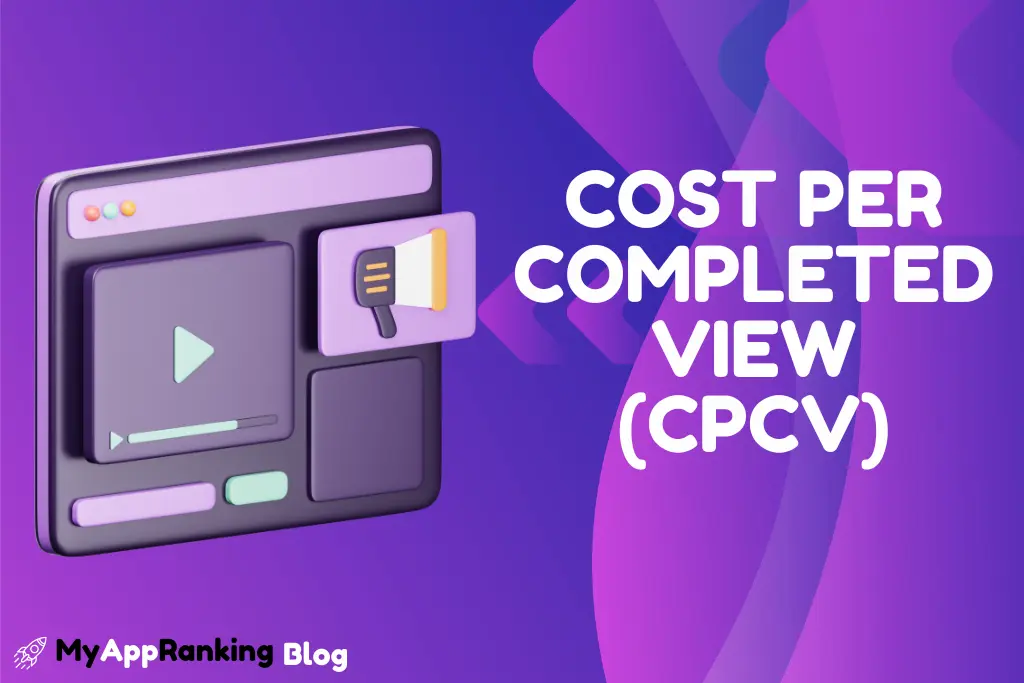Understanding Cost Per Completed View (CPCV) in Advertising

In the ever-evolving world of digital advertising, metrics and performance indicators are essential for evaluating the success and efficiency of campaigns. Among these metrics, Cost Per Completed View (CPCV) stands out as a crucial measure, particularly in video advertising. This comprehensive guide will delve into the intricacies of CPCV, its meaning, and its significance in the digital advertising landscape.
What is CPCV?
CPCV, or Cost Per Completed View, is a pricing model used primarily in video advertising. Unlike other metrics such as Cost Per Click (CPC) or Cost Per Impression (CPI), CPCV charges advertisers only when a viewer watches a video advertisement to completion. This ensures that advertisers pay only for fully engaged viewers, making their ad spend more efficient and potentially more impactful.
CPCV Meaning
The CPCV meaning revolves around its role as a performance-based metric. By focusing on completed views, CPCV provides a more accurate representation of an advertisement’s effectiveness. It addresses the issue of partial views, where viewers might skip the ad before it ends, thereby ensuring that advertisers are investing in genuinely engaged audiences.
The Importance of CPCV in Advertising
In the competitive field of digital marketing, understanding what is CPCV and leveraging it can significantly enhance a campaign’s ROI. Here’s why CPCV is important:
- Guaranteed Engagement: Since advertisers pay only when an ad is viewed in its entirety, they can be more confident about the engagement level of their audience.
- Cost Efficiency: CPCV ensures that the budget is spent on actual viewers who have seen the full message, as opposed to those who might have skipped or abandoned the ad halfway.
- Better ROI: With more engaged viewers, the potential for conversion increases, leading to a higher return on investment.
- Quality Metrics: CPCV provides a clearer insight into the quality of the ad content and its appeal to the audience.
How is CPCV Calculated?
To fully understand what is cost per view and how CPCV is calculated, it’s essential to know the cost per completed view formula. This formula helps advertisers determine the efficiency and effectiveness of their video ads.
Cost Per Completed View Formula
The cost per completed view formula is straightforward:
CPCV=Total Ad Spend / Number of Completed Views
For instance, if an advertiser spends $1,000 on a campaign and the ad is viewed to completion 5,000 times, the CPCV would be:
CPCV=1000/5000=$0.20
This means the advertiser pays $0.20 for each completed view of the video ad.
Video Completion Rate Formula
Another critical metric related to CPCV is the video completion rate. This metric indicates the percentage of viewers who watched the entire video. The video completion rate formula is:
Video Completion Rate=(Number of Completed Views/Total Number of Views)×100
If an ad has 10,000 total views and 7,000 of those are completed views, the video completion rate would be:
Video Completion Rate=(7000/10000)×100=70%
A higher video completion rate typically indicates more engaging and relevant content.
Benefits of CPCV Advertising
CPCV advertising offers several benefits over other pricing models:
- Transparency: Advertisers get a clear picture of their spending and its direct correlation with viewer engagement.
- Performance-Based: Payments are tied directly to performance, reducing wastage of ad spend.
- Enhanced Targeting: Since advertisers pay for completed views, it encourages the creation of more engaging and targeted content.
- Improved Ad Quality: To maximize completed views, advertisers are incentivized to produce higher-quality ads that capture and retain viewers’ attention.
Comparing CPCV with Other Metrics
To better appreciate the uniqueness of CPCV, it’s useful to compare it with other common advertising metrics:
Cost Per Click (CPC)
CPC is a model where advertisers pay each time a user clicks on their ad. While CPC can drive traffic, it doesn’t guarantee engagement or that the user will fully consume the ad content. In contrast, CPCV ensures that the viewer has watched the entire ad, which often leads to higher engagement.
Cost Per Impression (CPI)
CPI charges advertisers based on the number of times an ad is shown, regardless of whether it is viewed completely or even partially. This can result in higher exposure but doesn’t guarantee that viewers are paying attention. CPCV, on the other hand, ensures that the ad message is fully delivered to engaged viewers.
Cost Per View (CPV)
CPV is similar to CPCV but differs in that it charges for views regardless of whether the ad is watched to completion. This can be less efficient for advertisers focused on ensuring their full message is seen. CPCV refines this model by charging only for completed views, thus ensuring full engagement.
Implementing a CPCV Strategy
For advertisers looking to implement a CPCV strategy, several steps can maximize the effectiveness of their campaigns:
- Engaging Content Creation: Focus on creating compelling, high-quality video content that captures attention from the first second and retains it until the end.
- Targeting the Right Audience: Utilize data and analytics to target audiences more likely to engage with and complete watching the video.
- A/B Testing: Test different versions of the video ad to see which one performs better in terms of completion rates.
- Monitoring and Optimization: Continuously monitor the campaign’s performance using the cost per view calculation and video completion rate formula to identify areas for improvement.
Challenges with CPCV Advertising
While CPCV offers many advantages, it also comes with challenges:
- Higher Costs: Because CPCV focuses on completed views, it can sometimes be more expensive than other models like CPV or CPI.
- Creative Demands: Producing engaging content that holds viewers’ attention to the end requires significant creativity and investment.
- Measurement and Attribution: Accurately tracking completed views and attributing them to conversions can be complex and requires robust analytics tools.
Future of CPCV in Digital Advertising
As digital advertising continues to evolve, the importance of engagement metrics like CPCV is likely to grow. Advertisers increasingly seek ways to ensure their messages are not only seen but also fully consumed by their target audiences. CPCV’s focus on completed views aligns well with this trend, suggesting its continued relevance and potential expansion.
Emerging technologies such as artificial intelligence and machine learning will further enhance CPCV advertising by enabling more precise targeting and personalized content, thus driving higher completion rates and better ROI.
Conclusion
Understanding and leveraging Cost Per Completed View (CPCV) can significantly enhance the efficiency and effectiveness of video advertising campaigns. By focusing on completed views, CPCV ensures that ad spend is directed towards genuinely engaged viewers, leading to better performance and higher returns on investment. For advertisers aiming to optimize their digital marketing strategies, CPCV offers a transparent, performance-based model that aligns with the growing emphasis on quality engagement and measurable outcomes.
Do you Want
More App Downloads?
Boost the Mobile App Growth with the Ultimate Mobile App Marketing Experts
Latest Blogs
Do you Want
More App Downloads?
Boost the Mobile App Growth with the Ultimate Mobile App Marketing Experts
CPCV stands for Cost Per Completed View. It’s a pricing model in video advertising where advertisers are charged only when a viewer watches the entire video ad.
The CPCV meaning revolves around charging advertisers based on the completion of video views, ensuring that payment is made only for fully engaged viewers who watch the entire ad.
The cost per completed view formula is:
CPCV=Total Ad Spend/Number of Completed Views
For example, if you spend $1,000 and get 5,000 completed views, your CPCV would be $0.20.
CPCV is important because it ensures that advertisers pay only for fully engaged views, leading to better audience engagement, cost efficiency, and higher ROI
CPV (Cost Per View) charges for every view regardless of completion, while CPCV charges only for views that are completed, ensuring full engagement with the ad content.
Benefits include guaranteed viewer engagement, cost efficiency, improved ROI, and better insights into ad performance and content quality.
Challenges include potentially higher costs compared to other models, the need for highly engaging creative content, and complex measurement and attribution of completed views.
To maximize CPCV effectiveness, focus on creating engaging content, targeting the right audience, conducting A/B testing, and continuously monitoring and optimizing campaigns.
CPCV is expected to grow in importance as advertisers increasingly prioritize viewer engagement and measurable outcomes, supported by advancements in AI and machine learning for better targeting and personalization.




